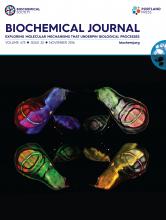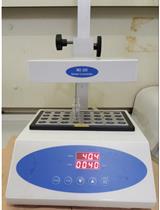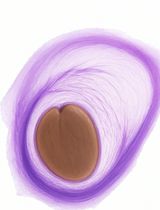- EN - English
- CN - 中文
Isolation of Keratan Sulfate Disaccharide-branched Chondroitin Sulfate E from Mactra chinensis
中国蛤蜊中硫酸角质素二糖-支链硫酸软骨素E的分离
发布: 2017年08月05日第7卷第15期 DOI: 10.21769/BioProtoc.2441 浏览次数: 7300
评审: Hui ZhuAnonymous reviewer(s)
Abstract
Glycosaminoglycans (GAGs) including chondroitin sulfate (CS), dermatan sulfate (DS), heparin (HP), heparan sulfate (HS) and keratan sulfate (KS) are linear, sulfated repeating disaccharide sequences containing hexosamine and uronic acid (or galactose in the case of KS). Recently, a keratan sulfate (KS) disaccharide [GlcNAc6S(β1-3)Galactose(β1-]-branched CS-E was identified from the clam species M. chinensis. Here, we report the isolation protocol for KS-branched CS from M. chinensis.
Keywords: Mactra chinensis (中国蛤蜊)Background
GAGs are found in tissues as the glycan moieties of proteoglycan (PG) glycoconjugates. CS is a GAG type composed of linear, sulfated repeating disaccharide sequences of N-acetyl-D-galactosamine (GalNAc) and glucuronic acid (GlcA). Another GAG type, DS, is biosynthesized through the action of glucuronyl C5-epimerase on CS, converting its GlcA to the CS epimer, iduronic acid (IdoA). The other GAG types HS and HEP are consisted of sulfated repeating disaccharide sequence of N-acetyl-D-glucosamine (GlcNAc) and GlcA/IdoA. KS is composed of sulfated repeating disaccharide sequences of GlcNAc and galactose. Among them, structural variations of CS, such as sulfation patterns and fucosylation, depend on the species and tissue of origin. For example, the A-unit with the structure [-4)GlcA(β1-3)GalNAc4S(β1-] (where S designates a sulfonate residue) is a predominant disaccharide found in mammalian or chicken tracheal cartilage CS, while the C-unit with the structure [-4)GlcA(β1-3)GalNAc6S(β1-] is a major disaccharide found in shark cartilage or salmon nasal cartilage CS. In contrast, a significant amount of the D-unit disaccharide [-4)GlcA2S(β1-3)GalNAc6S(β1-] is characteristically found in CS isolated from shark cartilage, while the E-unit disaccharide [-4)GlcA(β1-3)GalNAc4S,6S(β1-] is characteristic in squid cartilage. In sea cucumber, a sulfated fucose branches at the 3-OH position of GlcA. The disaccharide composition of CS governs its biological activities, including cell proliferation, migration, differentiation, cell-cell crosstalk, adhesion and wound repair through the interaction with growth factors, receptors, and other CS-binding proteins. Evidence suggests that CS structure is tightly correlated with function. For example, consecutive and disulfated disaccharide units including B, D and E-units in CS are critical for the interaction between CS and binding proteins (Hikino et al., 2003). A branched fucose at the 3-OH position of GlcA is also required for the anticoagulant activity of fucosylated CS (Mourão et al., 1996).
In general, isolation of GAGs is carried out as follows. 1) acetone defatting, 2) proteolysis, 3) collection of the GAGs, 4) fractionation of GAGs by anion-exchange chromatography and 5) desalting (Maccari et al., 2015). In our protocol, actinase E from Streptomyces griseus (step 2) and cetylpyridinium chloride precipitation (step 3) were used for the isolation of GAGs.
Materials and Reagents
- 200 and 1,000 μl pipette tips (Thermo Fisher Scientific)
- Centrifuge tube
- Spectra/Por®7 Dialysis Membrane Pre-treated RC Tubing MWCO: 3,500 (Spectrum, catalog number: 132111 )
- HiPrepTM DEAE FF 16/10 (GE Healthcare, catalog number: 28936541 )
- Dry powder of hot water extract from M. chinensis viscera obtained from Futtsu City Fishery Association in Chiba, Japan
- Acetone (Wako Pure Chemical Industries, catalog number: 011-00357 )
- Acetic acid (NACALAI TESQUE, catalog number: 00212-43 )
- Perchloric acid (60%, w/v) (NACALAI TESQUE, catalog number: 26502-85 )
- Ethanol (99.5% w/v) (NACALAI TESQUE, catalog number: 14713-53 )
- Tris (hydroxymethyl)aminomethane (Tris) (NACALAI TESQUE, catalog number: 35406-91 )
- Actinase E (Funakoshi, catalog number: KA-001 )
- Sodium hydroxide (NaOH) (NACALAI TESQUE, catalog number: 31511-05 )
- Sodium tetrahydroborate (Wako Pure Chemical Industries, catalog number: 192-01472 )
- Cetylpyridinium chloride monohydrate (99.0-102.0% w/v) (Wako Pure Chemical Industries, catalog number: 086-06683 )
- Hydrochloric acid (HCl) (35.0% w/v) (NACALAI TESQUE, catalog number: 18321-05 )
- Sodium chloride (NaCl) (NACALAI TESQUE, catalog number: 31320-05 )
- Sodium dihydrogenphosphate, anhydrous (NaH2PO4) (NACALAI TESQUE, catalog number: 31720-65 )
- Di-sodium hydrogenphosphate (Na2HPO4) (NACALAI TESQUE, catalog number: 31801-05 )
- Tris acetate buffer (pH 8.0) (see Recipes)
- NaOH buffer (see Recipes)
- Cetylpyridinium chloride solution (see Recipes)
- 50 mM sodium phosphate (pH 6) (see Recipes)
- 2.0 M NaCl in 50 mM sodium phosphate (pH 6) (see Recipes)
Equipment
- Refrigerated centrifuge (Sakuma, model: M200-IVD )
- Fume hood
- Erlenmeyer flask (AGC, catalog number: 4980FK500 )
- Stainless steel spoon (180 mm)
- Pipettes (Gilson, models: P20 , P200 and P1000 )
- Corning® reusable low form beaker, polypropylene, size 3 L (Corning, catalog number: 1000P-3L )
- Stir bar
- BioShaker (TAITEC, model: BR-23FP MR )
- Freeze drier (TOKYO RIKAKIKAI, Eyela, model: FDU-830 )
- Gradient pump (Bio-Rad Laboratories, model: ECONO GRADIENT PUMP )
- Analytical balance (Shimadzu, model: ATX224 )
Procedure
文章信息
版权信息
© 2017 The Authors; exclusive licensee Bio-protocol LLC.
如何引用
Higashi, K. and Toida, T. (2017). Isolation of Keratan Sulfate Disaccharide-branched Chondroitin Sulfate E from Mactra chinensis. Bio-protocol 7(15): e2441. DOI: 10.21769/BioProtoc.2441.
分类
生物化学 > 糖类 > 多糖
您对这篇实验方法有问题吗?
在此处发布您的问题,我们将邀请本文作者来回答。同时,我们会将您的问题发布到Bio-protocol Exchange,以便寻求社区成员的帮助。
Share
Bluesky
X
Copy link













